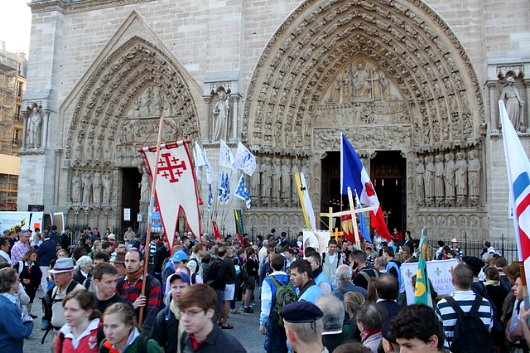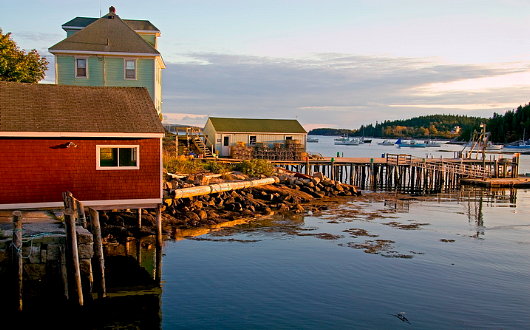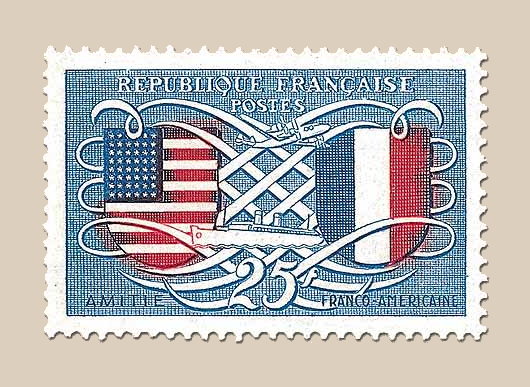2010 August
About Andrew Cusack
 Writer, web designer, etc.; born in New York; educated in Argentina, Scotland, and South Africa; now based in London.
Writer, web designer, etc.; born in New York; educated in Argentina, Scotland, and South Africa; now based in London. read more
News
Blogs
Reviews & Periodicals
Arts & Design
World
France
Mitteleuropa
Knickerbockers
Argentina
The Levant
Africa
Cape of Good Hope
Netherlands
Scandinavia
Québec
India
Muscovy
Germany
Academica
Olympic Teams of Yesteryear
The vanished lands and failed alliances of the Modern Olympiad
THE GAMES OF THE Modern Olympiad are events which are meant to bring the peoples of the world together in peace and harmony and all those good and heartening things, but from the very beginning they have gotten bogged down in the petty particularities of rival nations, which altogether makes them rather more fun and interesting, if perhaps a touch less high-minded. The story of the ancient gathering’s revival in 1896 through the efforts of Pierre Frédy, Baron de Coubertin is well-known. Athletes from at least fourteen countries participated in those first modern games in Athens over a century ago, though the concept of national teams was not introduced until the 1906 games (the Intercalated Games, which have since been de-recognised by the IOC). But since those first games towards the end of the nineteenth century, the fortunes of many lands have waxed and waned, and likewise the spirit of unity amongst various peoples vied with the spirit of distinctiveness. Here, then, are but a small sample of Olympic teams which once vied for gold but which can no longer be found among the Olympic competitors of today. (more…)
Maine
Well, your humble and obedient scribe is retreating to the coast of Maine, whence the defeated loyal men of Berwick fled after suffering defeat at the hands of the wretched Cromwell in the Battle of Dunbar. I am bringing a few friends along, including Mssrs. Trollope, Goethe, Burns, Chesterton, Balzac, von Rezzori, and a Ms. Undset (I am finally more than two-thirds of the way through Kristin Lavransdatter). There may also be a corgi or two. Internet connectivity very sketchy in those parts, though I will see if I can send a pigeon back to Hogarth if any news. (Doubtful it would do any good; the last e-mail I had him send he instinctively translated into dots and dashes — he does remind me of Uncle Otto sometimes).
So I bid you farewell, and you can expect my return in a fortnight’s time, invigorated anew by the salty breeze.
The Lion’s Gate
VISITORS TO CAPE TOWN may be surprised that, given the beauty and multiplicity of animals in the vicinity, the ‘Mother City’ has no zoo. There is actually a popular zoo at Tygerberg, twenty-four miles from Cape Town and less than ten miles from Stellenbosch, which is the only zoo in the province. But centuries ago — around 1700 — a ‘menagerie’ was founded in the Company’s Gardens in Cape Town which survived for over a hundred years.
François Valentijn, in his visit of 1714, noted the menagerie boasted a pair of ‘rheen’ or ‘rheebokken’ (probably kudu), a black rhinoceros, an eland, a ‘rossen bok’ (possibly a hartebeest), a hippopotamus, two lions, and a zebra. In the 1770s, the Swede Anders Sparrman noted the presence of many springbok, a warthog, some ostriches, and even a cassowary. The selection varied widely through the years, and given Cape Town’s status as ‘The Tavern of the Seas’ central to the European route to the Indies and the Far East, the zoo included not only African beasts but also some (like the Papuan cassowary) brought from the Orient.
In 1777, the notorious rake William Hickey ventured to extoll it as “the finest menagerie in the world, in which are collected the most extraordinary animals and birds of every quarter of the globe”. Less than fifteen years later, however, Lt. George Tobin of the Royal Navy described it as “a menagerie of some extent. It was but poorly supplied, there being but a few ostriches and some different kinds of deer.” Decades later, in February 1825, a traveller noted the menagerie in the pages of the Montly Magazine of London:
At the end of the Grand Walk, which is nearly three-quarters of a mile long, is the Company’s Menagerie, which is worth seeing, on account of a good-natured old lion, supposed to be the largest ever taken into captivity, and a tiger of immense size and power; there are several other specimens of African animals: but those are infinitely the largest of their species I ever saw—we have nothing that comes near them in England.
A spiritually inclined passer-through, the Rev. Henry Martyn, Chaplain to the Honourable East India Company, stated in 1832 that the “lion and a lioness, amongst the beasts, and the ostrich, led my thoughts very strongly to admire and glorify the power of the great Creator.” It was around that time that Sir Benjamin d’Urban, Governor of the Cape, granted land next to the menagerie for the erection of a building for the South African College, the germ of what would become the University of Cape Town. This was the beginning of what is now called the Hiddingh campus of UCT, the institution’s first home which continues alongside the main campus built on the Rhodes estate on the slopes of Devil’s Peak. The menagerie was shut in 1838 and the first building of the proto-UCT went up the next year in an exotic Egyptian Revival style.
The lion gates, however, are from earlier. They were built in 1805, probably by Thibault, with the lions & lionesses sculpted by the architect’s frequent collaborator Anton Anreith, also responsible for the magnificent pulpit in the Groote Kerk. The lionesses on the UCT side are original but the lions on the other side, curiously, were removed in 1873. In 1958 they were restored when Ivan Mitford-Barberton — arguably South Africa’s greatest sculptor after Anreith — created new beasts for the old perches. The gates are still there if you walk up the Government Avenue that bisects the Company’s Gardens, beautiful in the eye of this beholder in their immaculate, white, classical elegance.
Chartres MMX
The Pentecost Paris-Chartres Pilgrimage 2010

PENTECOST commemorates the descent of the Holy Spirit, often considered the birthday of the Church. Each year, this great feast of the Church is marked by the pilgrimage from the Cathedral of Notre-Dame de Paris on the Île de la Cité (above) to Notre-Dame de Chartres in the Orléanais by pilgrims young and old devoted to the traditional form of the Latin rite. The pilgrimage, often a feast of flags and banners, takes three days beginning on the Saturday of Pentecost weekend, continuing through the great feast itself, and arriving in Chartres on Pentecost Monday (which is still a public holiday in France). This year, Cardinal Vingt-Trois, the Archbishop of Paris, graciously led Benediction on the second day of the pilgrimage, and met with and blessed individual pilgrims. (more…)
Debating Hiroshima
Christian morality versus modern relativism
THREE YEARS AGO over on the New Criterion’s blog, Armavirumque, my friend and then-colleague & boss Roger Kimball and I had an interesting exchange on the morality of the bombing of Hiroshima. The debate began when Roger wrote a blog entry citing an opinion piece from Oliver Kamm of the Guardian supporting President Truman’s decision to drop the Bomb. I then responded with a post of my own pointing out that the conservative reaction at the time was one of horror at the moral depravity to which we had descended, and that the it-would-have-been-worse-if-we-didn’t school of thought essentially can be reduced to an ends-justifies-the-means argument. Roger then responded with a post arguing that, well, sometimes the ends do justify the means.
Regardless of one’s thoughts on the Hiroshima bombing, arguing that the ends justifies the means is one of the cornerstones of relativism. Christians believe that we are not allowed to do evil, even if that evil may serve a good cause. It is not simply a matter of choosing something bad over something worse. Evacuating the British Army from Dunkirk, for example, was bad, but leaving it there was worse. Yet, both were morally licit options for Churchill to make, though the prudential evidence supported the former option rather than the latter.
Innocent people inevitably die in most wars, but that cannot excuse the deliberate and intentional targeting of an entire city for destruction by a military force. That so many American Christians still excuse the bombing of Hiroshima and Nagasaki is frightening evidence that America has convinced Christians to be Americanised rather than Christianity convincing America to be Christianised. (more…)
dot Scot
Since  the decision by ICANN, the mysterious council of elders whose nomenclatory dominion spans, it seems, the entirety of the “world wide web”, to designate .cat as the “sponsored Top-Level Domain” of the Catalonian linguistic and cultural community, much speculation has arisen in various sub-statal lands throughout the world about future TLDs. In our favoured realm of Scotland, a campaign has arisen for .scot to be designated the TLD for Scotland. While I wholeheartedly support the campaign for a Scottish TLD, I have already expressed my reservations about the increasing size (not number) of TLDs. The traditional country-code TLDs are all two-letter combinations, and any new TLDs representing geographic entities ought to stick to this restraint.
the decision by ICANN, the mysterious council of elders whose nomenclatory dominion spans, it seems, the entirety of the “world wide web”, to designate .cat as the “sponsored Top-Level Domain” of the Catalonian linguistic and cultural community, much speculation has arisen in various sub-statal lands throughout the world about future TLDs. In our favoured realm of Scotland, a campaign has arisen for .scot to be designated the TLD for Scotland. While I wholeheartedly support the campaign for a Scottish TLD, I have already expressed my reservations about the increasing size (not number) of TLDs. The traditional country-code TLDs are all two-letter combinations, and any new TLDs representing geographic entities ought to stick to this restraint.
But then what would Scotland’s top-level domain be? .sl is taken by Sierra Leone, while .sc belongs to the Seychelles, and .st to São Tomé. We might hark back to the Gaelic with .al for Alba, except that it’s already occupied by Albania. Ah! Caledonia! How about .cd? Nope, that belongs to the Congo. Blast. It might be necessary to go to three letters then, which brings us either to .sco or .sct. Neither look all that attractive, though .sco has the advantage of being pronounceable. Actually, .sco is quite imaginable, when spoken: parliament.gov.sco, fifeherald.sco, glenfiddich.sco. It just doesn’t look right. .scot looks better, but the rhyming nature of “dot scot” is irritating to say aloud.
I do wish they’d make .gb available again. I’d much rather be a “gee-bee” than a “yoo-kay”. Great Britain is a natural entity, after all, whereas the United Kingdom is a government construct. Perhaps if the Union is re-negotiated, we might move from .uk to .gb, just as .yu was changed to .cs when Yugoslavia was renamed Serbia & Montenegro. (The two split not long afterwards, and went for .rs and .me).
With four letters, at least .scot is not the longest proposed top-level domain. Some ninny thinks there should be a .quebec — how cumbersome! .qu would be much better, and one can just imagine the Québécois pronouncing it. Other British proposals include .eng for England and .cym for Wales. “Norn Iron” loses out, as .ni belongs to Nicaragua, but .ul or .uls are conceivable for Ulster. Perhaps the Vatican could dole out .sre — Sancta Romana Ecclesia — for ecclesiastical domains.
The Academic Portraits of Cyril Coetzee
A Selection of University Portraiture by the South African Painter
THE ART SCENE in South Africa is widely varied in both style and quality, and the individual artist who is devoted solely to a single school is almost rare. The works of Cyril Coetzee (born in 1959) vary from quasi-figurative explorations of colour dynamics to multi-layered, almost mythological narrative paintings. His academic research at Rhodes University, located in his Eastern Cape hometown of Grahamstown, explored anthroposophic colour theory, so it’s no surprise part of his further studies were undertaken at the Goetheanum in Dornach, Switzerland (one of the sites covered in Stephen Klimczuk & Gerald Warner of Craigenmaddie’s Secret Places, Hidden Sanctuaries). Coetzee’s corpus also include a number of purely figurative portraits, many of which were commissioned by places of learning in South Africa. (more…)
Come to Finland
Travel Advertising from the Golden Age of Poster Design
FINLAND IS HIGH on my list of places to visit once I am re-situated across the pond, mainly because of the exceptional warmth and charm of the Finns I am blessed enough to call my friends. If the Finns themselves weren’t reason enough to visit the Land of the Midnight Sun, journalist & travel historian Magnus Londen has teamed up with copywriter Joakim Enegren and web operative Ant Simons to compile Come to Finland: Posters & Travel Tales 1851-1965. The art of poster design is one sadly neglected today, when advertising has developed into myriad other more pervasive yet less impressive forms. The book’s closing date, 1965, roughly marks the end of the golden years of poster design. Visitors to the book’s website can order postcards of the posters featured in the book, or copies of the posters themselves, more of which the dedicated poster-hunting authors are continually discovering. (more…)
Growing with Responsibility
THERE WAS MUCH debate in the better tea-drinking circles of New York in June when the sixteen-year-old Californian sailor Abby Sunderland had to be rescued by French fishermen in the Indian Ocean during her attempt to be the youngest person to circumnavigate the globe single-handedly. The main concern among my fellow tea-drinkers was trying to locate philosophically the appropriate dividing line between parents enforcing a proper level of safety for their own children and encouraging the appropriate spirit of adventure & human endeavour. The Dutch girl Laura Dekker, two years younger than Miss Sunderland, is now going to go for it herself and, like the California youth, was born into a sailing family.
Peter Hitchens wades gently into the debate in his latest Mail on Sunday column with these thoughts:
Good luck to Laura Dekker, the 14-year-old Dutch girl who wants to sail round the world on her own. Laura was born on a yacht, had her own boat by the time she was six, and began sailing alone when she was ten. How I envy her. The last time I tried to sail alone, I was clinging to the wreckage within five minutes.
The efforts of the authorities to stop her were obviously motivated by reasonable concern. Imagine what the British state would have done. But children can do so much more than we think they can, and grow with responsibility. Once, this attitude was common. Does anyone now read Arthur Ransome’s Swallows and Amazons, in which the children’s father is asked for his permission for the youngest to sail unsupervised, and replies in a telegram ‘If not duffers, won’t drown. Better drowned than duffers’.
In a later book, the wonderful We Didn’t Mean To Go To Sea, the same children unintentionally sail across the North Sea to Holland, when they accidentally slip anchor. They arrive safely, entirely because they have been trusted in the past. Someone should send Laura Dekker a copy.
Search
Instagram: @andcusack
Click here for my Instagram photos.Most Recent Posts
- Burns Tower April 19, 2024
- Patrick in Parliament March 18, 2024
- Articles of Note: 13 March 2024 March 13, 2024
- Cambridge March 9, 2024
- Taken on Trust March 4, 2024
Most Recent Comments
Book Wishlist
Monthly Archives
Categories




